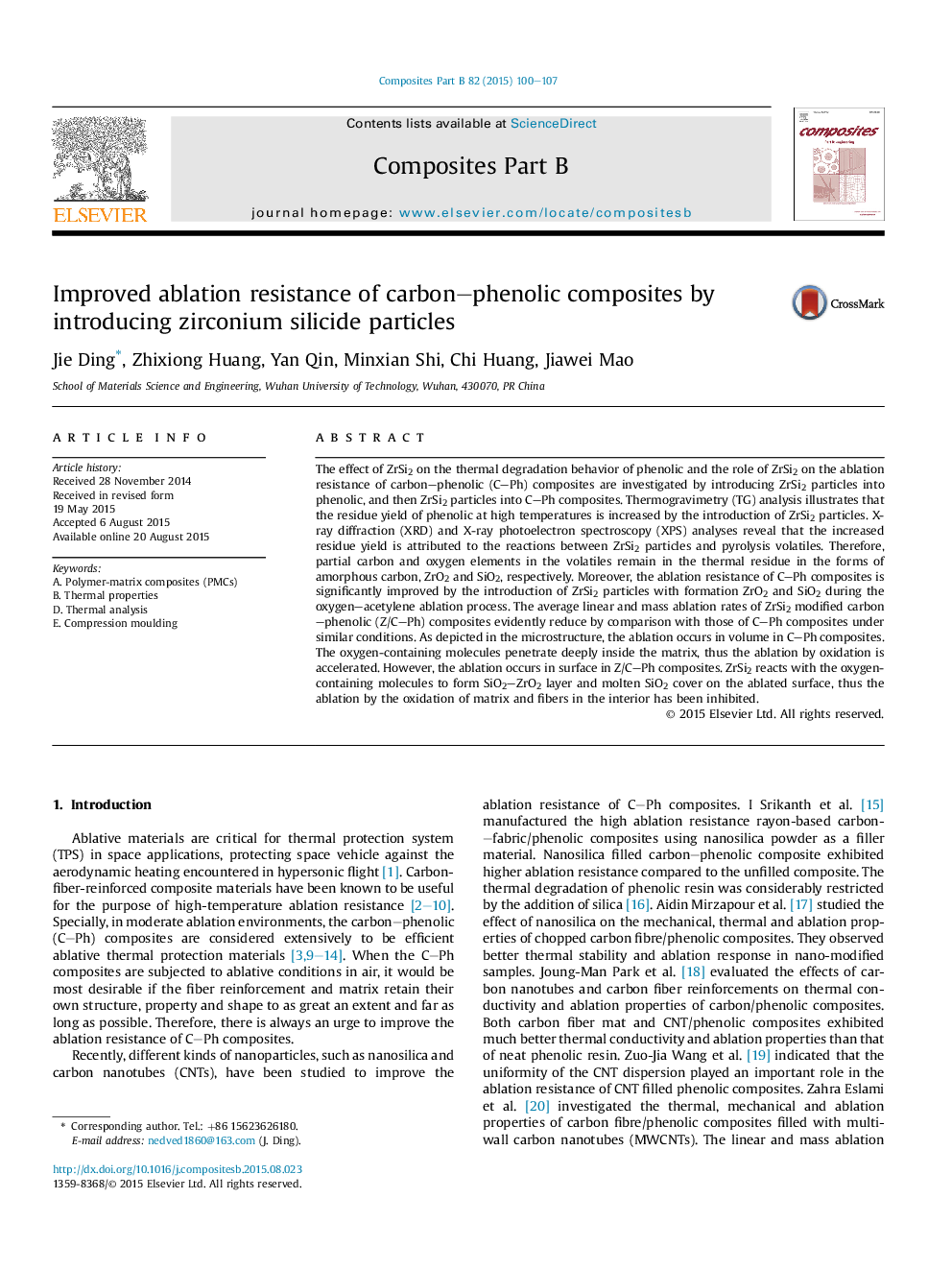| Article ID | Journal | Published Year | Pages | File Type |
|---|---|---|---|---|
| 817212 | Composites Part B: Engineering | 2015 | 8 Pages |
The effect of ZrSi2 on the thermal degradation behavior of phenolic and the role of ZrSi2 on the ablation resistance of carbon–phenolic (C–Ph) composites are investigated by introducing ZrSi2 particles into phenolic, and then ZrSi2 particles into C–Ph composites. Thermogravimetry (TG) analysis illustrates that the residue yield of phenolic at high temperatures is increased by the introduction of ZrSi2 particles. X-ray diffraction (XRD) and X-ray photoelectron spectroscopy (XPS) analyses reveal that the increased residue yield is attributed to the reactions between ZrSi2 particles and pyrolysis volatiles. Therefore, partial carbon and oxygen elements in the volatiles remain in the thermal residue in the forms of amorphous carbon, ZrO2 and SiO2, respectively. Moreover, the ablation resistance of C–Ph composites is significantly improved by the introduction of ZrSi2 particles with formation ZrO2 and SiO2 during the oxygen–acetylene ablation process. The average linear and mass ablation rates of ZrSi2 modified carbon–phenolic (Z/C–Ph) composites evidently reduce by comparison with those of C–Ph composites under similar conditions. As depicted in the microstructure, the ablation occurs in volume in C–Ph composites. The oxygen-containing molecules penetrate deeply inside the matrix, thus the ablation by oxidation is accelerated. However, the ablation occurs in surface in Z/C–Ph composites. ZrSi2 reacts with the oxygen-containing molecules to form SiO2–ZrO2 layer and molten SiO2 cover on the ablated surface, thus the ablation by the oxidation of matrix and fibers in the interior has been inhibited.
